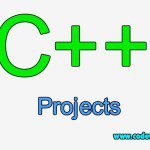Each Android application needs four vital segments with a specific end goal to be rich and good. The segments are appended in the AndroidManifest.xml — the application’s show document. The show document demonstrates how the segments associate and how they are connected. The four parts are:

- Administrations: this segment deals with the procedures out of sight made by the application.
- Exercises: this segment is in charge of the presentation and UI (User Interface). It additionally is in charge of the activities that the client will perform inside of the application’s UI.
- Content Providers: this segment oversees information administration and related issues. Telecast Receivers: this part deals with the correspondence between the application and the working framework — primarily with Android’s system.
Administrations
The administration segment is a foundation office. Clients are fundamentally ignorant of administrations. They are pushed to the foundation since clients don’t have to know or see what happens when an administration is running.
As a rule, administrations handle exhausting and dull operations required for the application to do its thing or undertakings. A decent illustration is Facebook’s Messenger application. Regardless of the fact that you change to another application, its administrations will even now run. One of its administrations is to bring messages from the server on the off chance that that some person messages you in Facebook.
Exercises
You can envision an action as a page of your application. In basic terms, an action is a screen UI in your application. Each movement is stacked with UI components all together for your client to finish an assignment or utilize the application. In Facebook’s Messenger application, you can get to numerous exercises or pages.
For instance, toward the begin of the Messenger application, you will see a login page. When you are signed in, the application will demonstrate the action for your companions list. When you attempt to message a companion in the dispatcher, you will be exchanged to the talk movement or page.
An action speaks to a solitary screen with a client interface. For instance, an email application may have one movement that demonstrates a rundown of new messages, another action to make an email, and another action for perusing messages. In the event that an application has more than one movement, then one of them ought to be set apart as the action that is exhibited when the application is propelled.
Content Providers
This segment deals with the stream of information from the application itself to others. The substance supplier can either store the information or data it has on the capacity or document framework, or place it in a database. Generally, you will be utilizing ContentResolver class strategies while making a substance supplier class.
Show Receivers
Show receivers or collectors handle the messages that the framework or different applications send or telecast. More often than not, telecasts from different applications and the framework inform applications concerning certain occasions, for example, a completed download. The show collector examines the message and performs the fundamental activity or reaction to the message.
Different Components
Obviously, those are by all account not the only parts that your application might have. Some different segments serve as “connectors” and “improvements” to those. Utilizing them astutely can get your application highlight rich and exceptionally utilitarian.
- Perspectives: are the consistent UI components you normally see on exercises, for example, records, catches, textboxes and so on.
- Pieces: not at all like the perspectives or UI components, sections are sure practices or reactions on exercises.
- Plans: their primary capacity is to wire parts together utilizing messages.
- Designs: handles and arrangements of the presence of perspectives. These additionally deal with the screen.
- Show: this is similar to the design or settings document of your application.
- Assets: are outer information or records that are not coded inside of your application.







